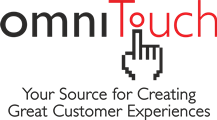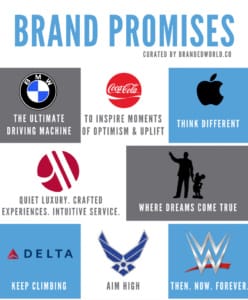Making a bad decision in the name of a good outcome – is still a bad decision
Read the following statements and see if you can identify the pattern:
“I know that transaction surveys should be short and sweet but this is a chance for our Marketing group to build relationship with Customers so we’re adding more questions.”
“I know that transactional NPS isn’t a good metric to use for individual Agents but I think it helps with Agent Engagement to share the good comments.”
“I know that measuring Agents on number of calls handled isn’t mathematically ideal but I think it helps us be cost efficient.”
Take a moment now to describe what you see in each of these examples.
Here’s how I describe it
In each example shared a good outcome was used to defend a bad decision.
Or put another way, a bad decision was forgiven in the name of a good outcome.
It helps with cost efficiency (the good outcome) to measure Agents on number of calls handled (the bad decision).
And invariably, the person who uses this approach will start off with, “I know that…”.
Which in a way makes it worse.
Notice how the conversation gets shut down
Notice how this kind of statement shuts the conversation down.
When someone says, “…because it will make us cost efficient.” it puts the Listener in a difficult position.
I mean who’s going to argue against cost efficiency? Or Agent engagement? Or Customer relationship? These are all good and important outcomes.
It can feel awkward to feel that you’re debating against a good outcome. Especially if this statement comes from the boss. Or an authority figure.
But you know it’s a bad decision. So its worth digging in and exploring.
Here’s how I do it
Is the bad decision being put forward – the too long transaction survey, the transactional NPS question, the metric on # of Calls Handled – a significant lever that drives that good outcome?
You can’t just have an opinion. Show me.
 Use a Scatter diagram, an Ishikawa diagram, financial modelling. Basically use whatever tool or method fits the purpose.
Use a Scatter diagram, an Ishikawa diagram, financial modelling. Basically use whatever tool or method fits the purpose.
But show me how that bad decision truly contributes significant impact on that good outcome.
And if there’s a well document practice or principle that we’re not planning to follow tell me why it doesn’t apply to us.
For example # of Calls Handled as an Agent performance metric turns out not to be a big contributor to Cost Efficiency.
In fact that metric can potentially increase overall costs.
Oops.
And what about the impacts on the ecosystem?
Now let’s turn our lens to the impacts on the ecosystem. Because the decisions we make don’t operate in isolation.
 There are always impacts on other parts of the ecosystem.
There are always impacts on other parts of the ecosystem.
And I’ve always thought of professionals working in Customer Experience & Service as ‘Custodians of the Customer Ecosystem’.
What are the ecosystem impacts of using # of Calls Handled as an Agent metric?
Well when you sit down and study it, Agents who are targeted on # of Calls Handled invariably shortchange Customers on Quality.
Either in the style or completeness of their response or both.
 Is that a good thing? Most Organizations would say no.
Is that a good thing? Most Organizations would say no.
A shortchange in Quality is going to potentially increase our unnecessary repeat contacts figure. Which in turn increases cost and reduces Service Level.
And it also hits our Customer Satisfaction outcomes which can result in more complaints to handle and an increase in Customer defections.
And let’s remember that Agents who are targeted on quantity often lose the chance to develop their quality. To develop those powerful communication skills that can serve them throughout their lives.
The ecosystem impacts are significant – and need to be considered as part of the decision making process.

It can seem that I’m talking about a small thing here
 Even I can see how this might be seen as nitpicking. Or that it’s just a small thing.
Even I can see how this might be seen as nitpicking. Or that it’s just a small thing.
But step back and consider.
It only takes only a few such decisions of the “I know it’s not good/right/great to do X but we do it to get Y” variety to ripple through the ecosystem and potentially do more harm than good.
Thank you for reading!
Thank you for the time you took to read this today!
If you’d like to stay up to date on our articles and other information just send over your email address or add it to the contact form on our website.
 Daniel Ord
Daniel Ord
www.omnitouchinternational.com








 Not the organizational vision though of course the CX Vision must map to the organizational vision.
Not the organizational vision though of course the CX Vision must map to the organizational vision. Equipped with my CX Vision (point #2) and my readiness analysis (point #3), I can now set out the short, mid & long term activities needed to move forward.
Equipped with my CX Vision (point #2) and my readiness analysis (point #3), I can now set out the short, mid & long term activities needed to move forward. I saw a CX Consultant once say, “It’s not about the money…”. And I remember thinking what terrible advice that was.
I saw a CX Consultant once say, “It’s not about the money…”. And I remember thinking what terrible advice that was. Metrics inform me of my progress – and keep our CX efforts headed in the right direction,
Metrics inform me of my progress – and keep our CX efforts headed in the right direction, These days I can visit the dentist, buy new eyeglasses and make a dinner reservation in German. I’m not where I want to be with my vision yet – but I’m closer than I was when I started.
These days I can visit the dentist, buy new eyeglasses and make a dinner reservation in German. I’m not where I want to be with my vision yet – but I’m closer than I was when I started. I appreciate the time you took to read this. And if you’d like to follow along with our articles and other information just leave your email address in our contact form!
I appreciate the time you took to read this. And if you’d like to follow along with our articles and other information just leave your email address in our contact form!




 That happens when the author of the article positions the company they’re describing in one of two ways:
That happens when the author of the article positions the company they’re describing in one of two ways: With her usual pragmatism she told me –
With her usual pragmatism she told me –



 Formal living rooms may sound old fashioned – but they’re still around.
Formal living rooms may sound old fashioned – but they’re still around. For a University Contact Center, the Agents were instructed to immediately redirect the Caller to the university website if it turned out that the information was available there.
For a University Contact Center, the Agents were instructed to immediately redirect the Caller to the university website if it turned out that the information was available there.  I bet you can imagine what those Agents sounded like when we listened to the calls. Yup that’s right.
I bet you can imagine what those Agents sounded like when we listened to the calls. Yup that’s right.







 But, over time and with your influence, a great Service Vision can readily evolve into an organizational CX Vision.
But, over time and with your influence, a great Service Vision can readily evolve into an organizational CX Vision.


 But one potential barrier I’ve seen often is this one.
But one potential barrier I’ve seen often is this one.
